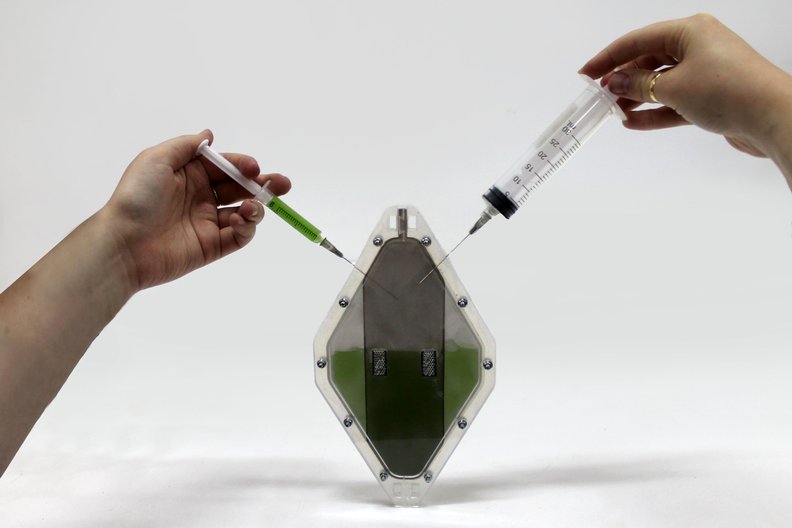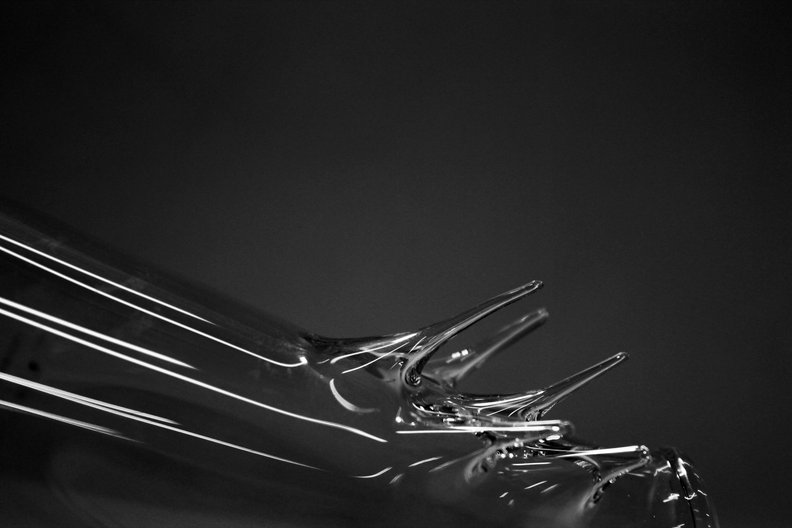3 September 2019
BIOBABES, REDESIGNING OUR RELATION AND INTERACTION WITH THE ENVIRONMENT THROUGH MATERIALITY AND FABRICATION PROCESS.
Tell us about yourself or your practice.
BioBabes is an international collective of feminist makers, architects and researchers engaged in the re-design of our relations and interactions with our living environment.
We are a group of experienced designers working with a range of materials and fabrication methods, which include living organisms, organic matter, biomimetic and biosynthetic processes. We work to develop the emerging field of biodesign and to disseminate its principles to a broader audience through innovations and biofabricated design pieces.
The group was founded in the context of the Institute for Advanced Architecture of Catalonia of 2015 where its founding members worked together on a project that focused on bioluminescent bacteria and reflected on ways to introduce their biological energy production capacities into the public space. The collective formed over the shared interest in exploring how the interaction with biological entities can be employed as a means to re-develop a symbiotic relationship with nature and to foster the design of similar relations with the living in design.
The collective is currently set up as a creative bio-centred research, design, and biofabrication studio with a cross-disciplinary approach. We work internationally, both independently and together as a group. Operating in this way, we can reach a wider audience and collaborate with other designers, scientists, makers, and local industries to develop and enrich our shared aim.
What are you working on at the moment?
We are continuing to develop recent projects involving life forms like the microorganism physarum polycephalum, whose habitat has been re-designed in the wearable glass vessel that gives the name to our BioVer, a glass jewellery line. Through this project, we aim at promoting the development of a relationship of care for the living element incorporated in our design and what it stands for. The objective of the line is to challenge the
relation of observation by freeing the organism from the claustrophobic condition of laboratory object and projecting it, magnified by our glass pieces, on everyday life, where it belongs and deserves the same attention unfortunately attributed to it only by experts and behind closed doors. By folding the petri dish that contains the physarium in a wearable piece, we aim at encouraging more persistent and interactive attention to nature.
At the same time, each of us plays its part in the biodesign community within its individual setting. Thora is currently devoting her time working on a PhD research in bacterial biomineralisation at Newcastle University. Her study focusses on the structuring of a biofabrication process whose purpose is to form a microbial induced mineralised structure. In this context, she explores material- and fabrication methods to incorporate living cells as an inherent part of the process and facilitate the synthesis of the biomaterial. Recently, we have begun investigating solutions for the existing textile waste problem, where we hope to close the cycle and use the waste as a valuable resource for commodities within the textile industry. Within this framework, Jessica is currently collaborating with Fabtextiles in Barcelona, focussing on developing research in biomaterials. As part of this collaboration, we are looking into opening a space or a new hub in the city that can facilitate and encourage the exploration of sustainable and biocentric fabrication practises.
What key issues are you addressing with your work? What impact do you hope to see through your work? Why is design important?
We see biodesign as an intersectional practice joining different areas of technology, science and creativity. The idea behind it is to re-connect the living and the inorganic, the naturally adapted and the designed, overcoming the separation between the biological and the artificial, culture and nature that for too long have been conceived as separated. Humans have co-evolved with technology, and their impact has structured the world way beyond our understanding. Reflecting on the ways in which design pieces can overcome the artificial binary of natural and cultural, delivering our ideas in both artistically impactful and theoretically articulated way, we believe that biodesign can materially plug these elements into each other to produce and inspire positive change and to re-design relationships of care.
As an intersectional practise, its aim is to design connections, de-conditioning the human from the economic paradigms that have structured the depraved relations threatening our civilisation today. We aim then at re-designing our perception of the living environment we occupy and our
relations with production and consumption paradigms. Reflecting these views on our own practices of makers and designers responsible for how people engage with and consume our products, our activities are always informed by a study of the impact of the materials we use and the processes that are used to realise them. It is indeed our firm belief that the practise itself must be self-critical and always striving to find sustainable solutions to help closing the current linear consumption model.
Tell us about something you’ve worked on that’s made you feel proud.
BioCatalytic Cell is a project we worked on in collaboration with Dr Paolo Bombelli at Cambridge University at IAAC for a biophotovoltaic installation we set up at the London Zoo. The piece used the algae’s photosynthetic process to generate electrons that we were able to capture and transport through an interactive structure. Energy output sensors were implemented in the design of this setup, and we could monitor different conditions in which algae can generate energy. This project represented a great collaboration of design, engineering and biology coming together to form a both functional and aesthetically pleasing piece.
How do you approach inclusivity and accessibility in your work?
As a collective, we are extremely conscious of the socio-political implications of design. With our work, we try to raise awareness regarding the impact that the practise has not only on the natural environment but also and first of all on social relations that design shapes and enforces. Thought design, we aim at diffusing the realisation that the vast majority of the environments that surround us, of the interfaces through which we interact with, and of the relations our civilisation has entailed the relegation of women and other cultures on which capitalism and its models of consumption find their fertile ground.
We believe that restructuring our relationship with nature and the processes of production and consumption must allow a variety of viewpoints that have been regarded as unimportant, and therefore excluded from the processes of design for general use and consumption. The development of a new field of interdisciplinary research and new intersectional practices, however, offers the possibility to women to be the ideators, makers, users and
look and interact with our world. It is for this reason that we strive for a plurality and equality of creative viewpoints.
We are a proud collective of feminist designers and our pieces fight the struggle of the marginalised, talk the language of the unheard and give visibility to the invisible, magnifying the microscopic and illuminating the outlandish. We do not design for this or that market, this or that particular purpose: our purpose is to re-design people’s perspectives, to re-design relations. We design with.


